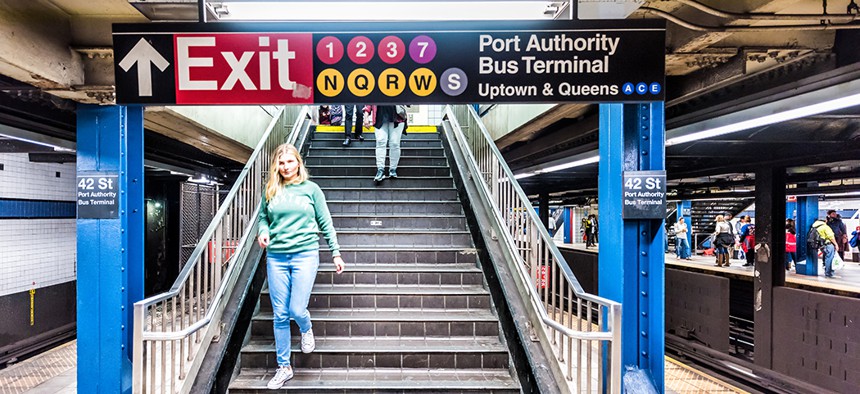MTA
What's next for the Port Authority?
An interview with Rick Cotton, executive director of the Port Authority of New York and New Jersey.

The New York City subway at 42nd Street Port Authority. Andriy Blokhin / Shutterstock
As the transportation links grow older and New York City grows larger, overseeing the interlocking network of bridges, rails, roads, and runways that makes the New York City metro area run has become an increasingly mammoth project for the Port Authority. City & State spoke with the man in charge of making sure this legacy infrastructure is in the best shape possible so that the region’s planes and trains can run on time.
C&S: Since joining the Port Authority in August, what have you found to be the most stubborn challenge?
RC: I don’t really think of it that way. The challenge before the Port Authority is to do multiple things well. At the top of the list are the major capital plan projects. Those are at the three airports: LaGuardia, Kennedy and Newark – all of them the access to the airports, which is the PATH to Newark, the LaGuardia AirTrain and the bus terminal and the added PATH capacity project are all top challenges.
C&S: How are the airport construction projects going – will LaGuardia’s overhaul be completed on time?
RC: It will be on time and on budget. It is an $8 billion construction project, which will produce an entirely new 21st century state-of-the-art airport. With the exception of Terminal A, every single airport building will be demolished. There will be new terminal buildings, new gates. There’s already a new garage, new roadways, new dining facilities, new amenities of every kind. The gates will start opening by the end of this year and the construction of the new airport as a whole is moving forward at a very rapid clip. … The big picture here is that the Port Authority is committed to making all three of our major airports – Kennedy, LaGuardia and Newark – 21st century, global best practices, world-class-standard facilities. That is not what they have been historically.
C&S: What is the next move or the next hurdle for the Port Authority with the Gateway rail tunnel project?
RC: The headline about the Gateway project is that it has to be built. Not to build it puts at risk the only passenger rail link that supports the Northeast Corridor and supports an enormous number of commuters whose livelihoods depend on it – 450 trains with 200,000 passenger trips a day. The region’s economy depends on it, having the transportation link into Manhattan. It’s a project that is the most pressing infrastructure project in the country. We keep saying that. The states of New York, New Jersey, with the Port Authority, have pledged $5.5 billion to the tunnel project and the region. The country needs Washington to step forward and that is where we stand.
C&S: How has security surrounding Port Authority Bus Terminal changed after the attempted terrorist attack in December?
RC: The Port Authority has always put security and safety at the top of the priority list with respect to all of our facilities. When the new chair and I took office in the fall of last year, one of the first things we did was to bring in outside experts to review security at all of our facilities; that review is underway. What, in fact, the incident at the Port Authority demonstrated was how strong our security currently is and how well-trained and focused the Port Authority Police Department and our security in general are. We remain enormously vigilant.

NEXT STORY: New York City's voice on transportation